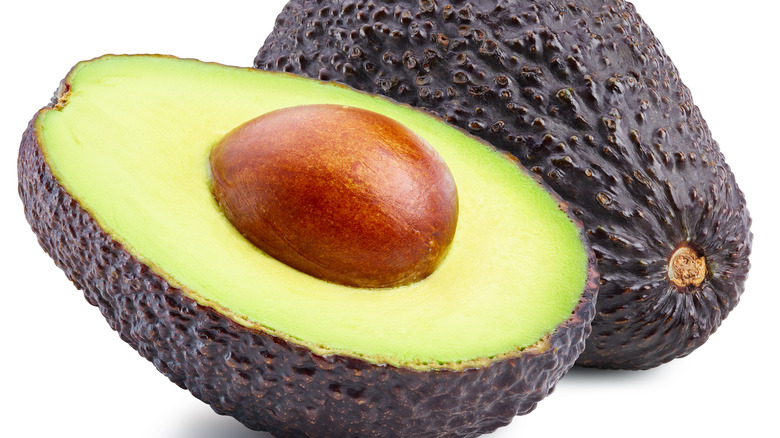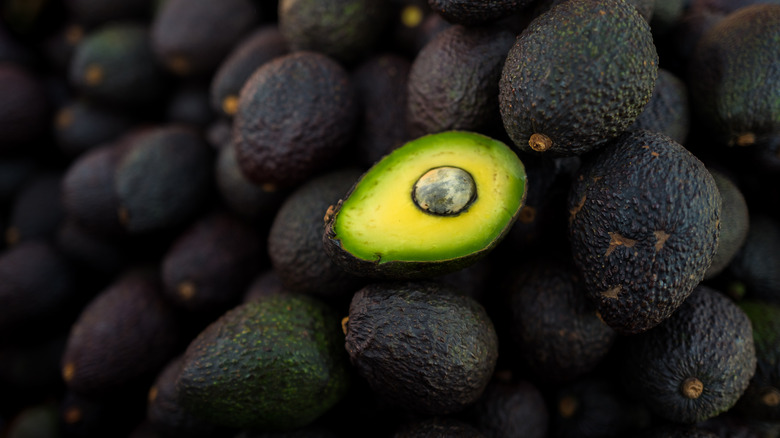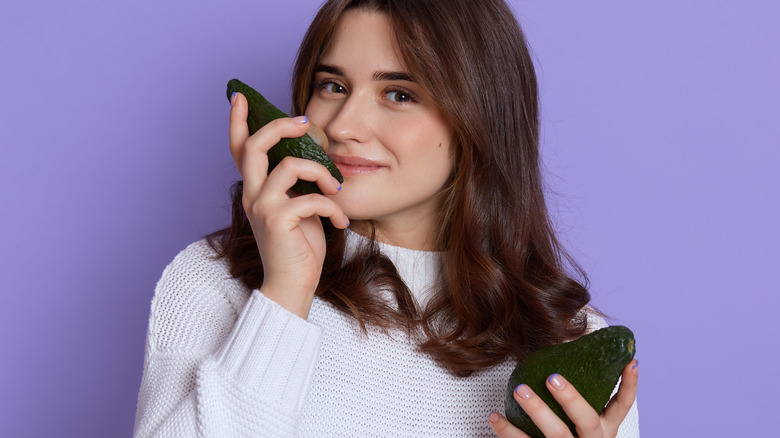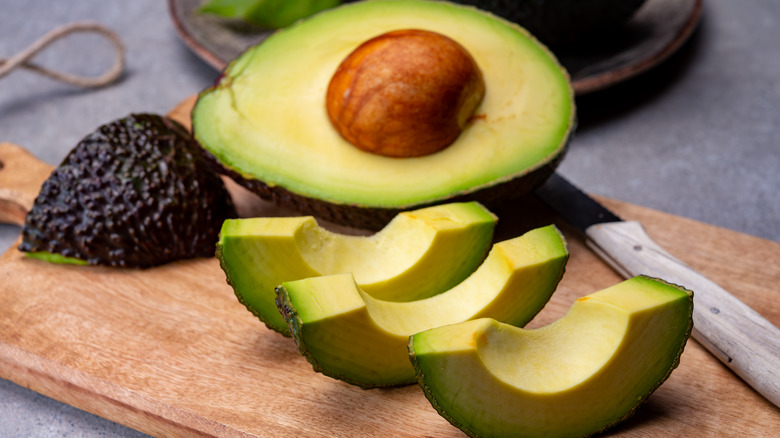How To Tell If An Avocado Has Gone Bad
A is for avocado. A source of healthy fats, according to FoodNavigator-USA, avocados offer buttery richness to any dishes they are appear in: smeared on toast, chopped up in a salad, sprinkled atop chili, and even blended into chocolate mousse, to name just a few. Avocados are such a beloved ingredient that in the last decade, reports FoodDive, "per-capita consumption has more than doubled" up to 8.5 pounds each year. By 2026, that number could very well exceed 11 pounds.
Any fan of the fruit (yes, avocados are fruit) knows that having the perfectly ripe avocado is essential for delicious results. But knowing how to distinguish a good, ready-to-use avocado from one that's getting rotten is less common knowledge. Eating a mushy, brown avocado most likely won't send you to the ER, as Insider shares the chances of getting sick are quite slim; but as with any fruit or veggie, the fresher the better. Here are the ways to tell if an avocado has gone bad.
Check the avocado's skin texture
You probably know an underripe avocado the minute you feel one — no matter how much you squeeze, the rock hard fruit won't budge. Well, the same principles apply to an overripe, spoiled avocado (via Healthline). One way of gauging whether that avocado on your counter has gone off is simply by touching it. Giving an overripe avocado the lightest press or squeeze will leave a permanent indentation. (There is one exception to this rule: If lightly squeezing your avocado leaves a small indentation, it could still be okay for mashed applications, such as guacamole, though cutting it into clean slices might not be possible.)
Furthermore, if you take a look at a whole avocado and it has a noticeably opaque and dark black color, along with deep grooves of sunken or mushy pockets, there's a good chance that avocado has seen better days.
Check the avocado's smell
Another effective way to make a baseline judgement call is to give your avocado a smell. Healthline shares a ripe and ready to used avocado will have a sweet, fresh smell. And there's evidence to back this up. As reported by the USDA, a study conducted by researchers at the University of California-Riverside found that "three chemicals prevalent in the early growth of the fruit ... were probably responsible for a grassy flavor, and that the 'likeability' of the [avocado] — from the taste-testers' point of view — increased as the levels of these compounds decreased in the maturing fruit." One pleasant whiff of a ripe avocado will have your nose enticed and saying to your senses, "I want that."
But if that's not what your nose is saying, ask yourself: does the avocado smell sour or like chemicals? If your avocado has an off smell, Leaf.tv argues that it could "indicate bacterial spoilage" and suggests you discarding the avocado immediately. If the smell leans more on the chemically side, it may be rancid and potentially contain toxic compounds (via Healthline). Case in point, a sour or chemical odor is a tell-tale sign your avocado is no longer fit for consumption.
Check the avocado's flesh
So let's say your avocado isn't dark and mushy, and the smell checks out, too. Another way to check if it's gone bad is to examine and taste the avocado's flesh (via Healthline). This is actually the easiest way to decipher if your avocado is okay to eat. A ripe avocado will have light green flesh, free of black and brown spots or dark streaks running through it. When you slice open your avocado and see this, consider it a one-way ticket to the most delicious green egg salad sandwich or caprese salad. But if there are dark black and brown spots or lots of dark streaks, you've got a rotten avocado. Another characteristic of the flesh that points to possible spoilage is a "stringy," fibrous texture.
You are, however, in the clear if there's an isolated spot of brown or grey flesh. According to Food52, such reactions may be caused by simple bruising or low-temperature storage. While the taste of avocados in these conditions might be different to a slight degree, it won't necessarily be off-putting or completely inedible. If you want, you can remove any dark areas with a knife or spoon prior to consumption, the rest of your avocado should taste fine.



